
Photographica Pages
An online guide to collectable cameras and related stuff
180/2.8 Zeiss Olympia Sonnar for
Contax

The 180/2.8 Olympia Sonnar with Flektaskop on a Contax III.
Zeiss had many lens designs that were truely revolutionary. They were designs that changed what
could be photographed. This was one of them. In 1936 Zeiss
released the 180mm Olympia Sonnar, it's release coincided with the 1936 Winter Olympics in Barvaria.
To say that it impressed the photographic world might be a
bit of an understatement.

The 180/2.8 Olympia Sonnar with Flektaskop on a Contax III.
The first version was actually produced in 1935 so they would be ready for the Olympic games in early 1936. The lenses were large and heavy, weighing in at over three pounds, the lens was a five element/three group design. It was fitted with a direct mount and was rangefinder coupled. The heavy chrome lens had a shoe on the barrel to accept a special finder (436/11), which was mounted on a heavy ring that also provided a tripod mount. The minimum aperture was f/22. It is odd that the first serial numbers were earlier than what was current, indicating a 1934 producction date. The first batch was 1503701-1503750, 1844901- 1845000, 1874901-1874950 and 1998501-1988600, for a total of about 300. Many of these lenses were later converted to Flektoskop mout when it became available as it was much more practical to use.
In 1938 the lens was changed to include a reflex housing. The Flektaskop turned the Contax into an SLR with eye level viewing and the mirror raising control tied to firing the shutter. This was a bit more convenient, allowing framing and focusing as one operation (as opposed to the direct mount, which had to be focused with the rangefinder, then composed with the separate viewfinder), yet the finder was still fairly dim, and difficult to compose with as the image was but upside down and backwards. The lens was produced in five batches, 2119801-2119900, 2211001-2211100, 2274801-2275100, 2404101- 2404250 and 2682450-2682600 for a total of about 800 lenses.
A few lenses were produced in 1940 that were finished in black paint, and some of which were T coated. One batch of 50 has been recorded from 2757501-2757550.
After the war, Jena resumed production of the 1940 version of the lens, some of which may have been existing stock or possibly made from existing parts. The Flektaskop was finished in hammertome black gloss finish, and was marked Flektaskop and had the Carl Zeiss Jena logo. The serial number lacks a W prefix used before the war.
The Flektaskop was changed in 1949 to make the image right side up, but the image was still reversed. Also the mirror was now spring loaded for a quicker return. The finish was changed back to a duller black crinkle finish reminiscent of the prewar finish.
The final version for the Olympia Sonnar for the Contax was released 1951. The reflex housing was changed into the Flektometer, with a brighter, errect and non-reversed image, which made handling much easier. An on top of that, it had a split image rangefinder wedge in the focusing screen. But by this time people wanting a lens such as this would buy an SLR instead. The lens lived on in other mounts, but this version was made in limited numbers as only about 200 Flektometers were built.
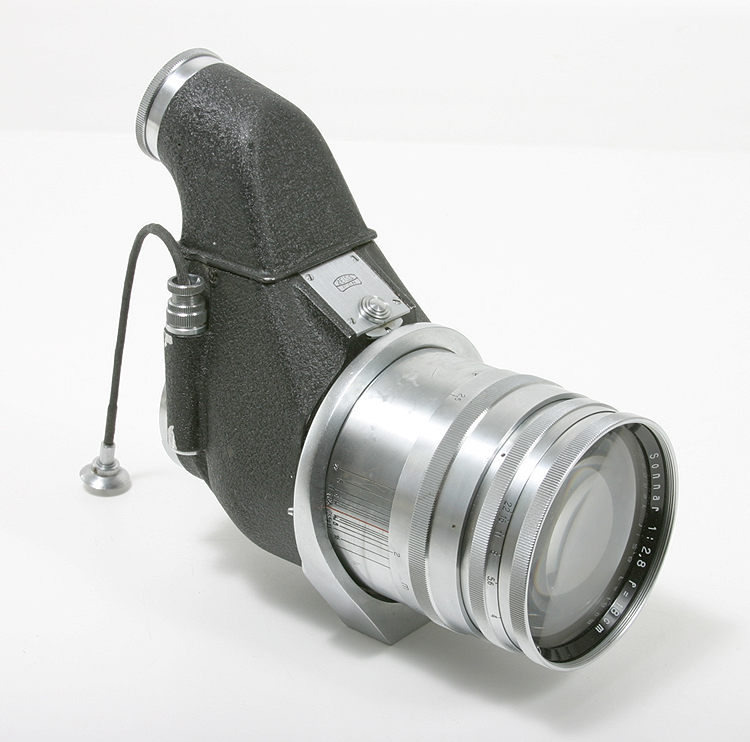
The 180/2.8 Olympia Sonnar with Flektaskop.
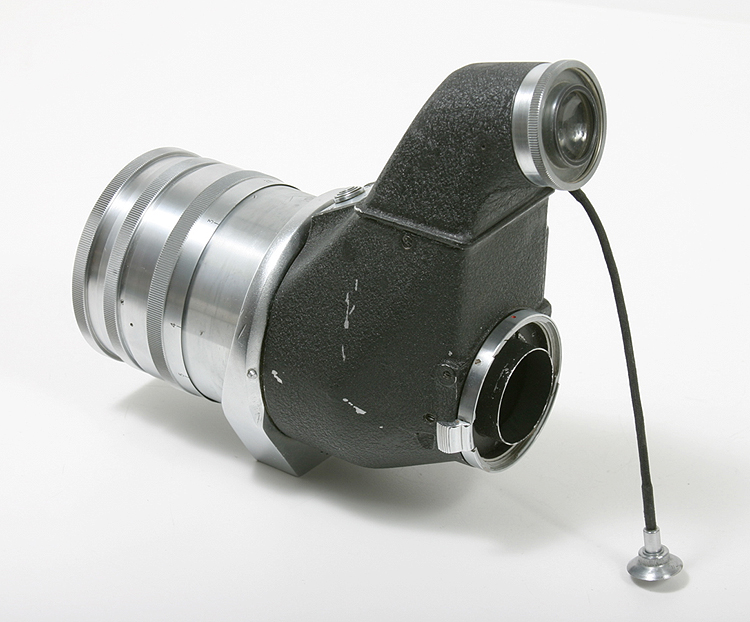
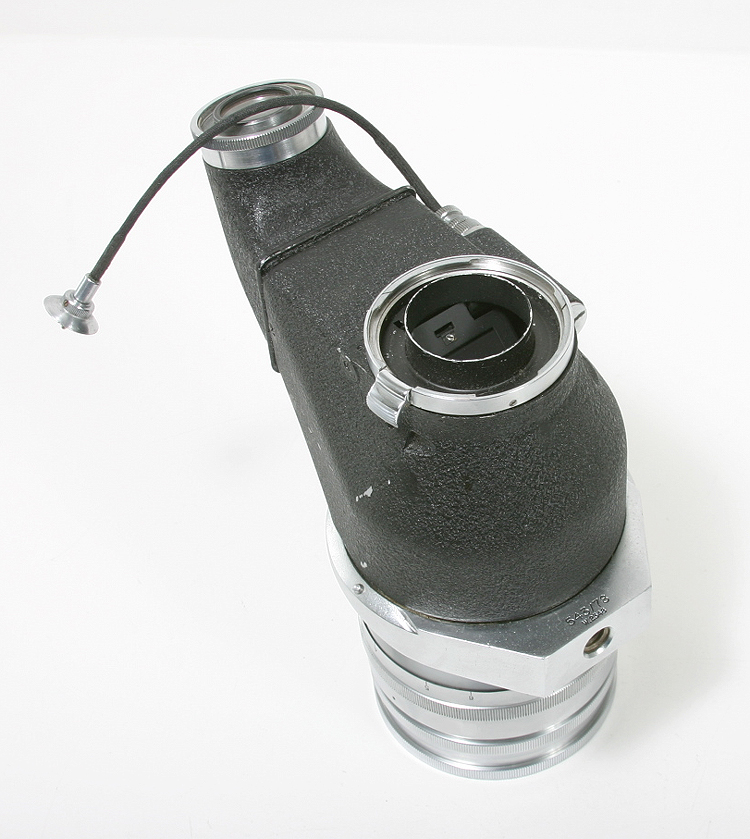
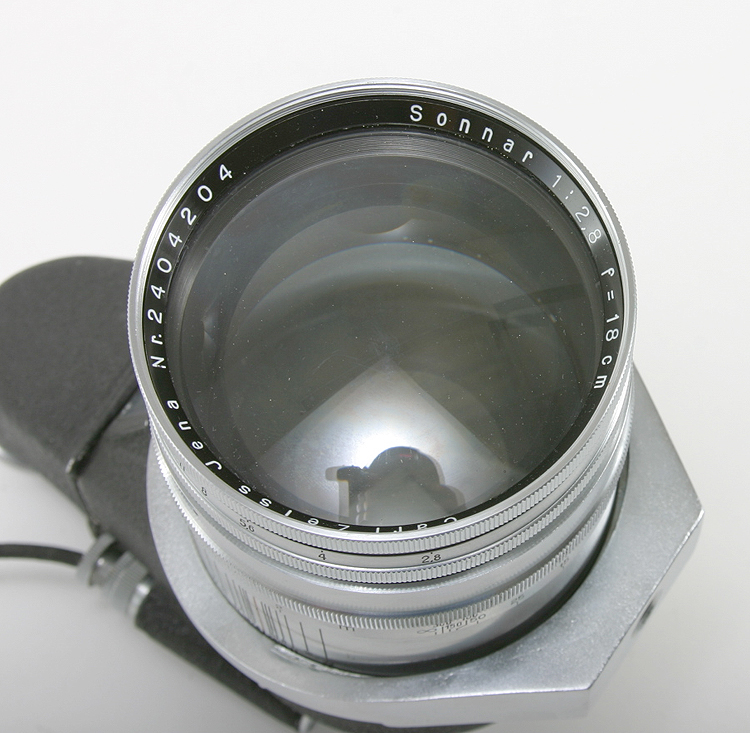
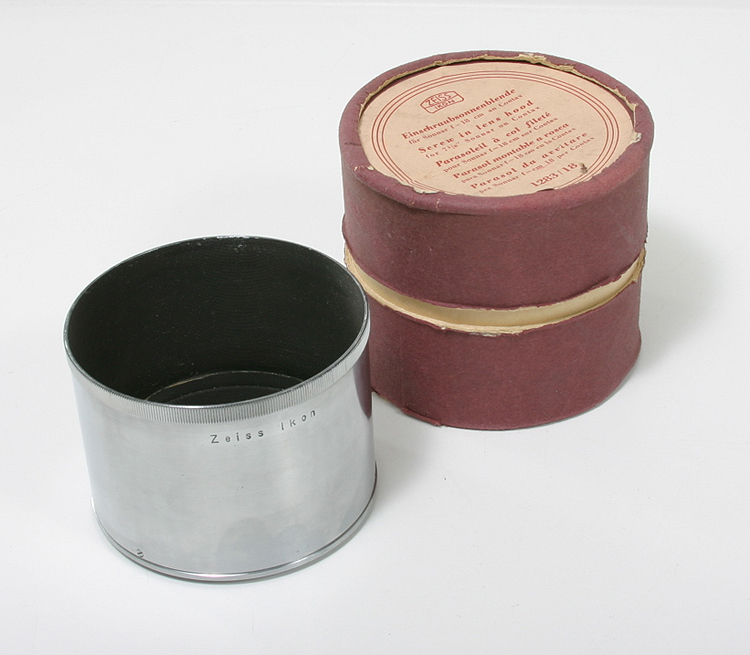
The shade 1283/18 for the 180mm Sonnar, with box.
